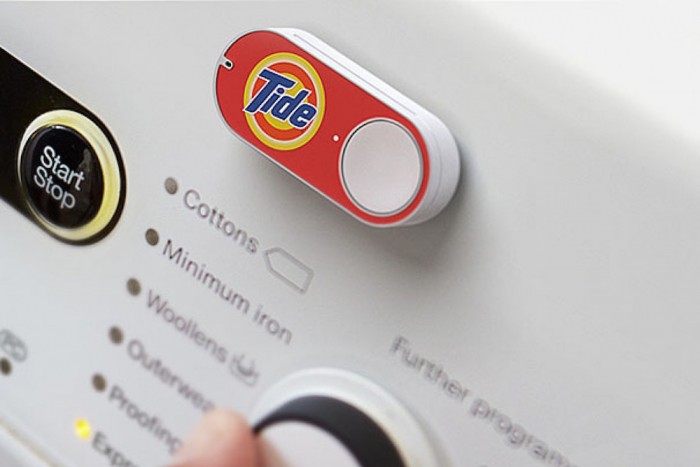
Amazon’s Internet Of Things ambitions continued to take shape yesterday (Jan. 19) when its Dash Replenishment devices officially went live.
What this means is that the devices and products that are integrated with Amazon Dash Replenishment — such as certain printers, a GE washer or a Gmate SMART blood glucose monitor — can automatically order more of themselves when the products are running low.
So, when that printer gets low on ink? Customers will automatically have it reordered from Amazon, thanks to the service that enables those connected devices to automatically order a number of physical goods. And, for customers who already own a compatible product, those consumers can activate the service after signing up — all without buying a special device.
Amazon also announced that new brands and devices have joined the Dash Replenishment program, including Purell soap and hand sanitizer and the Whirlpool Smart Dishwasher. And for any brands that may want to join the service? They can do so by adding Amazon’s APIs into their connected devices.
As MPD CEO Karen Webster noted in a recent column: “The Dash Replenishment Service [along with the Amazon Echo] is on its way to becoming the center of a very pervasive and potentially very powerful commerce ecosystem.”
Dash jumped into the commerce world in March 2015 with the launch of the product-branded plastic buttons that enable consumers to order more goods of their favorite products with a Staples-like “easy button.”
And now, as Webster pointed out, 140 applications later, Dash and its Replenishment Service have morphed into a software platform integrated into a variety of consumer products. Washing machines and pet feeders, alarm systems and printers, blood sugar monitoring devices and pool filtration systems all enable a combination of infrared sensors, scales and other technologies to calculate usage of the product connected to the replenishment services system.
“With Amazon Dash Replenishment, we want to make customers’ lives even easier so they won’t run out of items, like laundry detergent, pet food or printer ink, again. Customers simply activate Dash Replenishment when they are setting up their connected device and then rely on Amazon to automatically deliver those everyday essentials,” said Daniel Rausch, director of Amazon devices. “It’s exciting to make Dash Replenishment a reality. Customers can start taking advantage of the service today, and we will continue to launch and add new devices to the program this year.”
These connected devices — besides having the ability to automatically connect consumers to commerce — also have the ability to make lives a little easier for their customers. For example, GE’s washer with Smart Dispense technology can automatically put the proper amount of soap in each load. And now, with Dash Replenishment, that soap can automatically be restocked.
Amazon also pointed out in its release that device-makers can rely on the Dash Replenishment Service to place orders for their customers without having to build the backend infrastructure to fulfill orders. Instead, Amazon does the legwork and leverages its authentication and payment systems, customer service and fulfillment network.